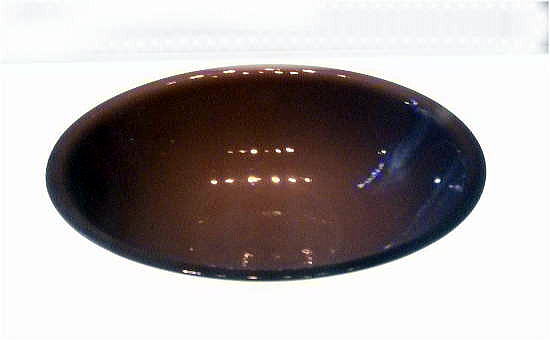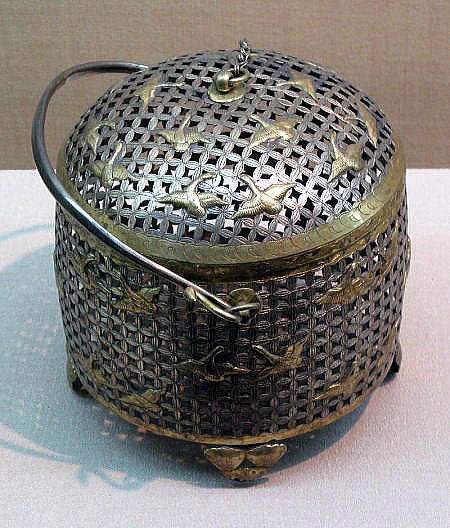| シルクロードの今を征く Now on the Silk Road 法門寺 展示 (宝鶏市、中国) 青山貞一 Teiichi Aoyama 池田こみち Komichi Ikeda 共編 掲載月日:2015年1月22日 更新:2019年4月~6月 更新:2020年4月1日 独立系メディア E-wave Tokyo 無断転載禁 |
| 総合メニュー 珍宝館1 珍宝館2 珍宝館3 珍宝館4 新宝館5 珍宝館6 展示 本稿の解説文は、現地調査や現地入手資料、パンフなどに基づく解説に加え、百度百科中国版から日本への翻訳、Wikipedia 日本語版を使用しています。また写真は現地撮影以外に百度百科、Wikimedlia Commons、トリップアドバイザーさらに地図はグーグルマップ、グーグルストリートビュー、百度地図などを使用しています。その他の引用に際しては、その都度引用名を記しています 最初は中国宝鶏の法門寺 展示2です。 ◆法門寺 展示 (中国宝鶏市)   秘色瓷 Source:Wikimedia Commons  法?寺珍宝?秘色瓷器 Source:Wikimedia Commons  Famen temple in Shaanxi province (China) Source:Wikimedia Commons  Tea Case. Tang Dynasty, Famen Si The ground tea would have been kept in this drawered case, and then measured out into a decanter (like the turtle-shaped holder nearby in the museum) for use in the tea service. The case contains an internal sieve to regulate the size of the particles of tea. This object is one of a set from an imperial tea-service. Its inclusion in the Famen Si crypt is early evidence for the importance of tea in China. Source:Wikimedia Commons  Tea Grinder. Tang Dynasty, Famen Si Both a functional tool and a work of art, this grinder with its serrated disk was used to grind the tea leaves to powder. This object is one of a set from an imperial tea-service. Its inclusion in the Famen Si crypt is early evidence for the importance of tea in China. Source:Wikimedia Commons  Salt Dish. Tang Dynasty, Famen Si It is a little-known fact that a pinch of salt was typically added to Chinese tea during its preparation. The salt was presented on this elegant, lotiform, silver dish. Its elaborate, bell-shaped cover is decorated with a design of ocean waves and sea-creatures, and topped by a lotus-bud knob. This object is one of a set from an imperial tea-service. Its inclusion in the Famen Si crypt is early evidence for the importance of tea in China. Source:Wikimedia Commons  Turtle-Shaped Tea Container. Tang Dynasty, Famen Si This lightly-gilded silver container, in the shape of a turtle, would have held the powdered tea for the service. This object is one of a set from an imperial tea-service. Its inclusion in the Famen Si crypt is early evidence for the importance of tea in China. Source:Wikimedia Commons  Tea-Leaf Container. Tang Dynasty, Famen Si The outstanding vessel shown here is decorated with golden (gilt), flying geese that are applied to a silver frame of open basketwork. Much humbler receptacles, made of woven bamboo, would have been the prototype for this elegant tea-leaf container. This object is one of a set from an imperial tea-service. Its inclusion in the Famen Si crypt is early evidence for the importance of tea in China. Source:Wikimedia Commons  Gold Dish. Famen Si An intertwined pair of mandarin ducks in repousse decorates the bottom of this large gilt-silver bowl. Paired Mandarin ducks are a perennial Chinese symbol of <a href=./../beijing/fd03.html>marital harmony</a>. Source:Wikimedia Commons  Incense Censers. Tang Dynasty, Famen Si Two censers are shown here; a large one (completely assembled, exterior) at photo left, and a smaller one (separated into top and bottom hemispheres, interior) at photo right. The gimbals that are mounted inside each censer are ingeniously contrived to keep its incense burning upright, even while the censers are being swung back and forth. Source:Wikimedia Commons  Islamic Glass Vase. Tang Dynasty, Famen Si This glass vase illustrates the early contact between Tang China and the Islamic world along the Silk Road. Source:Wikimedia Commons 珍宝館Aへつづく 総合メニュー |